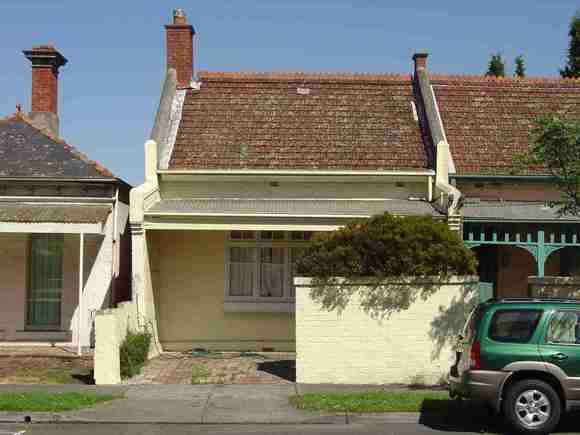| Back to search results » | Back to search page » |
|
12 Loyola Grove
Other NameHouse Location12 Loyola Grove, BURNLEY VIC 3121 - Property No 176320 LevelIncl in HO area contributory |
|
Statement of Significance
Precinct statement of significance Component streets include: Adam Street, Barrow Place, Crimea Street, Gibdon Street, Loyola Grove, Madden Grove, Parkville Street, Stawell Street. Statement of Significance What is significant? Golden Square is part of crown allotments 14 and 15, originally part of the Colonial Police Reserve or Police Paddocks, used for the agistment of horses by the police forces in Melbourne. It was subdivided and sold by the Government during the 1860s and 1870s creating Madden Grove, Barkly Avenue, Stawell and Gibdon Streets. By 1888 these blocks were further subdivided and Parkville (formerly Peckville), Crimea (formerly Normanby) and Felicia Streets were formed. Melbourne and Metropolitan Board of Works detail plan from 1899 shows dense development in the block bounded by Madden Grove and Stawell, Cherrill and Adams Streets. Approximately one-third of the remainder of the area had also been developed at that time. A school is shown on the corner of Stawell and Cherrill Streets (52). Burnley State School SS2853 was a three storey Gothic Revival style school, built in the 1880s. It was demolished in 1979 (53) and the site developed as a residential square or public park, with some significant residual trees from the school era. A major part of the area was occupied by Terry's Burnley Brewery (c1893), later Barrett and Burston Maltings malt house and silos, where the existing two-storey brick building fronting Gibdon St is shown as the brewery and the malt house is the long, gabled form building on the east of the block. Visually distinctive concrete silos were added to the complex in the 20th century has become a key characteristic of the City. The Burnley Brewery joined a large number of industrial complexes that hugged river and creek banks in Victorian-era Melbourne with, in this case, a tannery located a little further west along the Yarra River (54). A significant group of matching Edwardian cottages in Parkville and Crimea Streets were allegedly built for Clements Langford, a prominent Melbourne builder whose projects included the Manchester Unity Building. (55) The name Golden Square may be connected with Sir James Palmer who was a pioneer in the Richmond area. He practised in London, living in Golden Square, and became senior surgeon at St James's Dispensary. After arriving in Victoria in 1840, Palmer made his home at Richmond near the Yarra and soon established Palmer's Punt (near Hawthorn Bridge) that served to provide access to Boroondara until a bridge was built in 1851 (56). It may be that his London home gave its name to the Golden Square area while he resided there. He later built the notable house, Invergowrie, in Kew. Main development era The main development period evident in the heritage overlay is that of the Victorian era with a substantial contribution from the Edwardian-period. There is also a contribution from some well preserved inter-war buildings and individually significant places of all eras. Contributory elements The Golden Square Heritage Overlay Area contributory elements include (but not exclusively) buildings of the Victorian and Edwardian-eras, being detached and attached houses having: . Pitched gabled or hipped roofs, with some facade parapets; . One storey wall heights but with some two storey house rows; . Weatherboard, face brick (red, bichrome and polychrome), or stucco walls; . Corrugated iron roof cladding, and some Marseilles pattern terra-cotta tiles and slate roofing; . Chimneys of either stucco finish (with moulded caps) or of matching face brickwork with corbelled capping courses; . Post-supported verandah or porch elements facing the street, sometimes set out on two levels, with cast-iron detailing for Victorian-era houses and timber detailing for Edwardian-era houses; . Less than 40% of the street wall face comprised with openings such as windows and doors; and . Front gardens, originally bordered by timber picket front fences of around 1m height; Contributory elements also include: . Corner shops and residences with display windows and zero boundary setbacks; . Well preserved buildings including one storey houses and one and two storey industrial buildings from the pre Second War era; . One major Victorian-era industrial complex, being the former Burnley Brewery complex; . Evidence of a former historic school reserve and plantings; . Public infrastructure, expressive of the Victorian and Edwardian-eras such as bluestone pitched road paving, crossings, stone kerbs and channels, and asphalt paved footpaths. How is it significant? HO322 Golden Square Heritage Overlay Area, Richmond is aesthetically and historically significant to the City of Yarra (National Estate Register[NER] Criteria E1, A4) Why is it significant? The Golden Square Heritage Overlay Area is significant: . As a good representation of modest early housing in the area, from the late 19th to the early 20th century; . For some of the most intact and, in part architecturally distinctive, small Edwardian cottages to be found in the municipality; . For its Victorian residential housing development ranging from simple weatherboard dwellings to Italianate villas and two unusual rows of two-storey terraces; . For the original bluestone lanes and gutters and other early street elements such as the pillar box in Madden Gr.; . For the Golden Square Bicentennial Park and its mature trees, as symbolic of the Burnley Primary School, and the adjacent church sites, as two significant elements on the area's history; . For the contribution made by the Victorian-era Burnley Maltings as a major complex central to the history of the area over a long period, with its visually distinctive inter-war silos as remnants of the extensive industries that once crowded the banks of the Yarra. References 52 MMBW Detail Plan 923, 1899. 53 McCalman.op cit. p 72 54 See Allom Lovell 1998: V1: 37- 55 McCalman.op cit. pp 17,172. 56 ADB entry for Palmer, Sir James Frederick (1803 - 1871)
Group
Residential buildings (private)
Category
House




